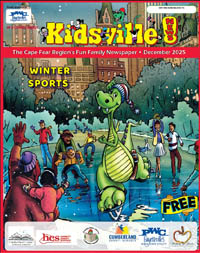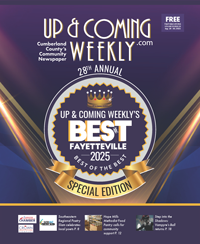Grimmer fairy tales: The three snake leaves
- Details
- Tuesday, 11 November 2025
- Written by Pitt Dickey

 We are back again today with one of the grimmer Grimms’ Fairy Tales, the story of the Three Snake Leaves. It has it all: battlefield courage, an odd obsession of a Princess, Yellow Fever, two snakes, magic leaves, triple reanimation, travel on the Lust Boat, murder most foul, and a trusty Faithful Servant.
We are back again today with one of the grimmer Grimms’ Fairy Tales, the story of the Three Snake Leaves. It has it all: battlefield courage, an odd obsession of a Princess, Yellow Fever, two snakes, magic leaves, triple reanimation, travel on the Lust Boat, murder most foul, and a trusty Faithful Servant.
Who could ask for anything more in a story? Trigger warning: if you are a sensitive soul, quickly turn this page and go to the crossword puzzle. Let us begin.
Once upon a time, there was a poor peasant (redundancy alert) who had a son whom he could no longer feed. The son, realizing he should seek his fortune in the world, joined the King’s army. There was a great battle in which the army was about to be defeated. The King’s General was killed in the battle.
The troops were about to run away. The son rallied the troops to win the victory. The King was so happy that he promoted the soldier to Field Marshal of his Army.
Naturally, the King had a beautiful daughter who had a little quirk. She refused to marry unless her bridegroom promised to be buried alive with her if she died first. She said: “After all, if he really loves me, why would he want to go on living?”
The soldier, being truly smitten and not a bit put off by this condition, married her. After a brief honeymoon, the Princess fell ill and died. The soldier knew he was committed to being buried alive. The King locked the Princess’s body and the soldier into the family mausoleum with four candles, four loaves of bread, and four bottles of wine.
The soldier rationed his supplies for many days. Eventually, he was down to the last wine, a candle stub, and a morsel of bread. He knew his time was up. Just then, he saw a snake crawl out of a corner of the vault, heading towards the Princess.
The soldier killed the snake with his sword, cutting it into three pieces. Moments later, a second snake crawled out of the wall carrying three leaves in its mouth. This snake pushed the three pieces of the dead snake back together, laying a leaf on each section.
The dead snake came back to life, slithering back into the wall with the second snake.
The soldier, a bright lad, put the three leaves on the Princess. Alakazam! She came back to life. The Princess and the soldier banged on the vault’s door. The King unlocked the vault, releasing them back into the land of the living. The soldier kept the leaves secret, telling only his faithful servant about them.
Unfortunately, the resurrected Princess no longer loved the soldier, although she pretended to do so.
The soldier asked her to go with him on an ocean voyage to meet his elderly father. Once on the ship, she fell madly in love with the sea captain in a medieval version of The Love Boat. They became lovers. The soldier became an obstacle to their eternal happiness.
After an evening of making whoopee, she told the Captain she wished her husband were dead so they could be married. The Captain agreed. When the soldier was asleep, they strangled him with a cord and tossed his body into the ocean. The Faithful Servant saw what happened. He jumped into a rowboat, pulling the soldier’s dead body from the ocean.
He put the three snake leaves on the soldier, who immediately returned to life.
The Princess and the Captain concocted a cover story to tell the King that the soldier had died of Yellow Fever and had been buried at sea. They would seek the King’s blessing to be married.
The soldier rowed his boat so fast that he got back to the Kingdom before the Princess. He told the King what had happened. The King had the soldier hide in a secret room to listen to how the Princess would explain her missing husband.
The Princess wept and wailed, lying about how sad she was that the soldier had died. The King told the soldier to come out from his hiding place to confront the Princess. She tried the old ploy of: “My husband fell into a deep coma, so we thought he was dead.” The soldier produced the rope they strangled him with. She confessed and begged her father for mercy.
The King said, “Your husband was ready to die in the grave with you, and he gave you back your life, but you killed him in his sleep.”
The King put the Princess and the Captain into a wooden ship that had holes drilled into it, launching it into an intense storm. The ship sank. The Princess and the Captain were never heard from again.
Today’s Moral: The sea of matrimony can be stormy, even if both the husband and wife have been dead once and brought back to life. No snakes were harmed during the writing of this column.
(Illustration by Pitt Dickey)

 How to resolve AdBlock issue?
How to resolve AdBlock issue? 












